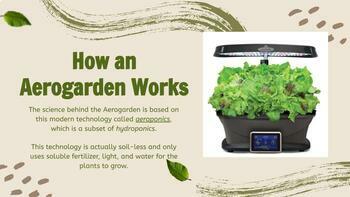No Soil Gardening Explained! Hydroponics in the Classroom!
- Google Slides™

What educators are saying
Description
Do you have an old Aerogarden or hydroponic system laying around your house? Here is a lesson to put it to good use! Hydroponics in the classroom are a low maintenance way to teach children the science of plants and bring STEM into the classroom. Students will learn HOW plants grow without soil. Hydroponics can be used to explain ecosystems and plant a seed (pun intended) of environmental responsibly in the younger grades.
Lesson includes charts, video, pictures,keywords, and a poster activity. Slides can be shown in one day or the second half can be shown after the plants grow a bit.
Students of any age can enjoy learning more about plant growth and how living things work. Elementary age students will be covering standards about living things and will benefit from the higher level thinking associated with the hands on experience. Older students can also learn about environmentally friendly ways to grow plants and the lesson can later be extended to include higher level thinking with essential questions such as "How can hydroponics help the world?", "Who can benefit from hydroponics or soilless plant growth?", "How can hydroponics impact our environment?", or "How can hydroponics benefit the environment?". This can also be an introduction to Aquaponics and plants in space (i.e.- how can we grow food on mars- google it, so cool!).





